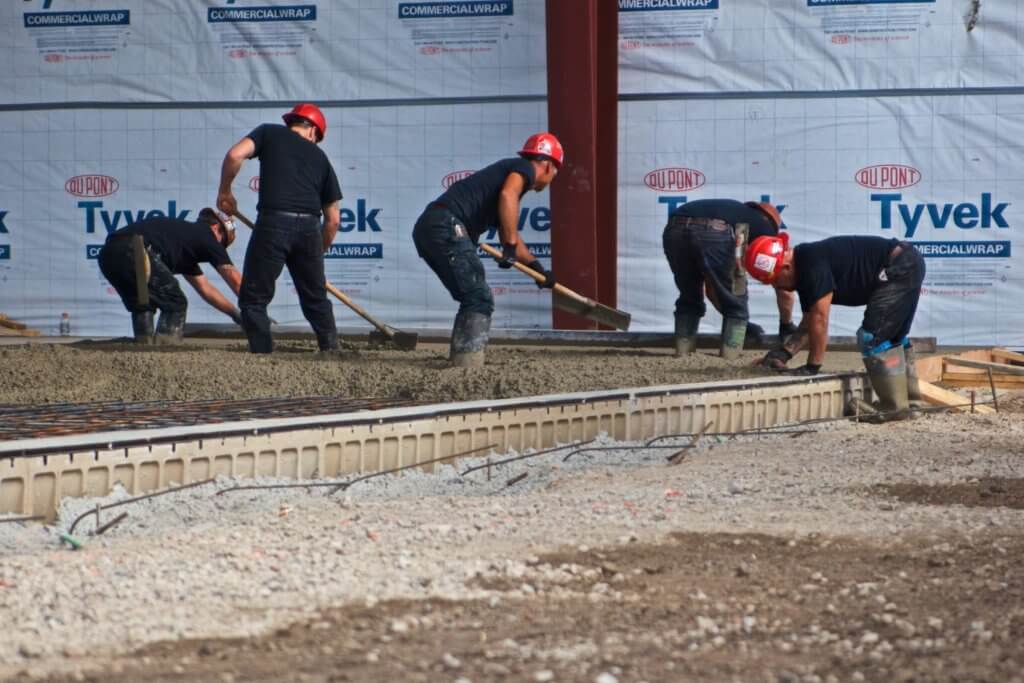
Pouring concrete in the winter can cause major problems in the quality and longevity of your new foundation. If newly poured concrete is not given the appropriate environment to cure, the concrete is likely to be damaged. This is due to the water in the concrete mix freezing and expanding, resulting in weak concrete. The American Concrete Institute defines cold weather as three or more consecutive days of low temperatures below 40 degrees Fahrenheit and air temperature below 50 degrees Fahrenheit for more than a 12-hour period.
When pouring concrete in cold weather, the concrete needs to be protected until it can handle the cold on its own. The general rule is that concrete must reach a strength of 500psi. At almost the same time that the concrete achieves 500psi strength, the cement has consumed enough of the water in the original mix so that even if it does freeze, there’s not enough water left in the pores to damage the concrete. With most concrete this happens 48 hours after the pour.
To help the concrete reach 500psi, there are two things we can do in cold weather: Change the mix to get it to set more quickly or protect the concrete from the cold—or more likely, both.

Mistakes to avoid when pouring concrete in cold weather:
- Not scheduling work around weather
- Pouring on frozen ground
- Allowing concrete to freeze
- Not using heaters
- Not using real-time temperature sensors
You must ensure that concrete is cured properly for safe removal of forms and shores and for safe loading of the structure during and after construction.
Our foundation experts work to ensure the highest quality on your project. Our experience guarantees a successful foundation for all your industrial projects.
Get started on a quote for an upcoming project by filling out our online form. You can also call (888) 833-8776 to speak with a representative today.


